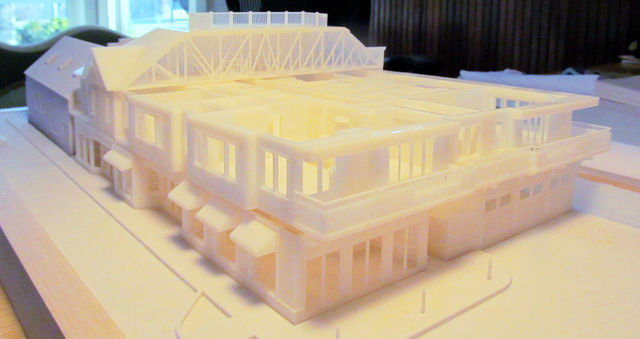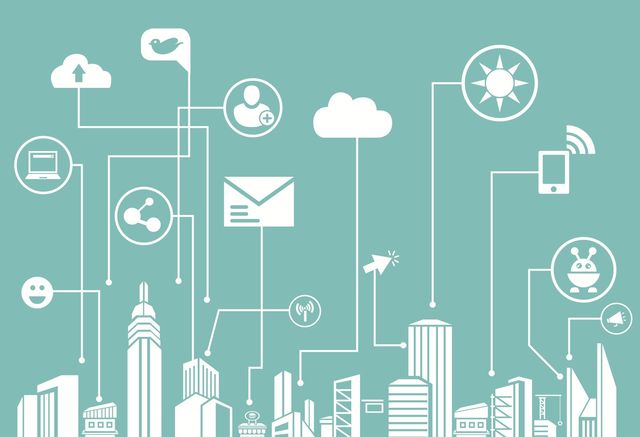

Advances in technology are impacting not only our daily life, but also the way things are being done in professional industries. Technology, like any instrument in the toolbox, needs to be properly wielded to be most beneficial to the craftsman and end-product-user, alike. Certain recent trends seem here to stay:

Aerial survey performed by Airshark for Coastal Engineering Co. involved drones flying over the Pamet Harbor in Truro. Other civil uses of drones include aerial photography, search and rescue, inspection of power lines and pipelines, counting wildlife, and delivering medical supplies to otherwise inaccessible regions.
Drones are being used for reconnaissance, data collection, observation, and natural resource management. The Association for Unmanned Vehicle Systems International, predicted in 2013 that the drone industry could generate $82 billion in economic benefits for the nation by 2025 and 100,000 jobs. In construction, drones are well-received due to unprecedented levels of data mobility, access, and efficiency they lend to projects. They are also shown to reduce costs associated with poor communication from the field, as well as reducing material theft from jobsites, and increasing worker safety. The overall benefits include time and financial savings, improved safety, access to richer information, and improved decision-making. Some examples of successful drone usage are found in the Minnesota Dept. of Transportation’s bridge inspections, and pipeline inspections in Alaska. However, as use of drones and other activities grows, so do regulations. Drones in crowded construction sites do come with serious risks. They have been known to crash into and injure people and property alike. Liability insurance can be a problem. Oftentimes, contractor’s standard commercial general liability insurance doesn’t cover drones. There has been a proliferation of legislative proposals to regulate the domestic use of unmanned aircraft systems at the county and municipal levels. Many of the proposals have been drafted specifically to address privacy concerns regarding the use of UAS by public employees, and most of the proposals regulate UAS altitudes and proximity to airports in the regulated locality.

Building model designed by Coastal Engineering Co. for Woods Hole Oceanographic Institution’s new Pressure Test Lab project. Participants in the building process are constantly challenged to deliver successful projects despite tight budgets, limited manpower, accelerated schedules, and limited or conflicting information. BIM helps to meet these rigorous deadlines.
The BIM technology incorporates all the disciplines of architectural and engineering design, construction, management and operation of any particular facility, be it church, school, road, bridge, office building, etc, from birth of an idea to facility management by the end user. The BIM software enables all the various disciplines to work simultaneously on a project as they digitally exchange data from the Cloud, using Computer Aided Design (CAD) software. This technology is being used worldwide on every continent. The need for expensive traveling back and forth and long distance phone calls is no longer needed. Immediate access to any changes makes for better communication among all the disciplines as the project proceeds. Traditional method uses two dimensional technical drawings which have to be physically transported back and forth. BIM extends this beyond 3 D to 4 D (time dimension) and then to 5 D (cost dimension). At a glance, the whole history of a project is available from cradle to grave at a tremendous savings of cost, time and energy.

Example of 3D-printed model used in design process for Coastal Engineering’s mixed use commercial/residential redevelopment project in Dartmouth, MA. 3D printable models may be created with a computer-aided design (CAD) package, via a 3D scanner, or by a plain digital camera and photogrammetry software.
3D printing is various processes used to produce a three dimensional object. Successive layers of material are formed under computer control to create an object. These objects can be of almost any shape or geometry and are produced from a 3D model or other electronic data source. A 3D Printer is a type of industrial robot. To say that the impact of this technology is huge is an understatement. Just about all areas of life are being affected by it. The cost of this technology was exorbitant at onset, but is becoming more available to individuals. Just imagine a 3D Printer producing food, building models, clothing, automobiles, bodily parts from limbs to organs to chemical elements and compounds. Advantages include faster, more accurate construction, reduced labor costs, reduced waste generation, and improved worker safety.

The world's technological per-capita capacity to store information has roughly doubled every 40 months since the 1980s. As of 2012, every day 2.5 exabytes (2.5×1018) of data are generated.
Big Data is a broad term for data sets so large or complex that traditional data processing applications are inadequate. The term also refers to the use of predictive analytics or other advanced methods to extract value from data, and sometimes, to a particular data set. Because construction companies tend to juggle multiple projects concurrently, large amounts of data are produced, collected, organized, and analyzed. This mass of unstructured data can place heavy burdens on database systems. Big Data enables these companies to perform a wide range of tasks from data management to pre-construction analysis. It facilitates efficient analysis and management of vast amounts of data to obtain valuable insights. Accuracy in Big Data may lead to more confident decision-making, and better decisions can result in greater operational efficiency and costs and risks reduction. Undergoing Big Data training helps employees learn about related management systems, meet process demands, ensure faster decision-making, and generate better understanding of their customers.

In 2016, there were at least 230 companies developing VR-related products in USA. Facebook has 400 employees focused on VR development; Google, Apple, Amazon, Microsoft, Sony and Samsung all have dedicated AR and VR groups.
Augmented Reality and Virtual Reality (AR/VR) terms are quickly becoming buzzwords in the Architect-Engineer community. The emerging technology can prove to be a valuable tool for design, communication, improving workflow and dramatic presentations. We as designers have gotten very good at showing what a space might look like, but in many ways we have come no further in demonstrating what a space feels like. The simple yet elegant technology gives the viewer “free will”. The viewer can choose where to look, and linger where they like. They are in the space “to scale”. It’s absolutely not the same as panning and orbiting while looking at your computer screen. Describing the experience is difficult for the same reason that it’s wonderful: it’s personal and almost tactile. In a nutshell, being able to “drop” the client directly into the building prior to its construction gives them a unique perspective to evaluate the spaces and give feedback. This in turn allows the design team to work in a faster, more collaborative way and head off problems in the design before it’s too late.
The described five technologies will likely continue to have tremendous impact on professions of architecture, engineering, construction, and management. “The future ain’t what it used to be,” said Yogi Berra. These technologies render a Buck Rogers’ science fiction tame!
Please contact Coastal Engineering Co., Inc. for a full review or with any specific questions you may have.